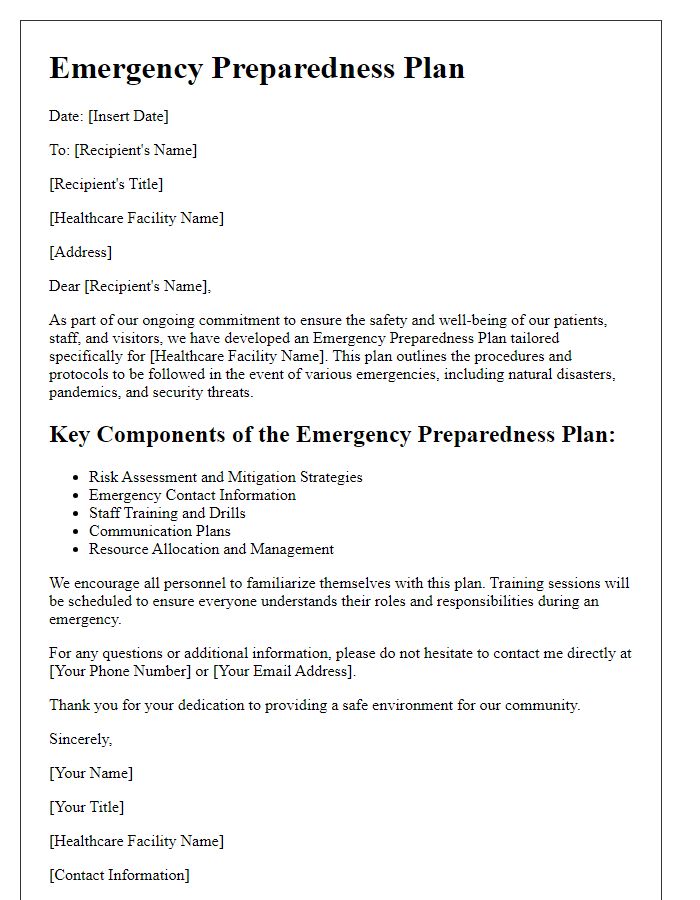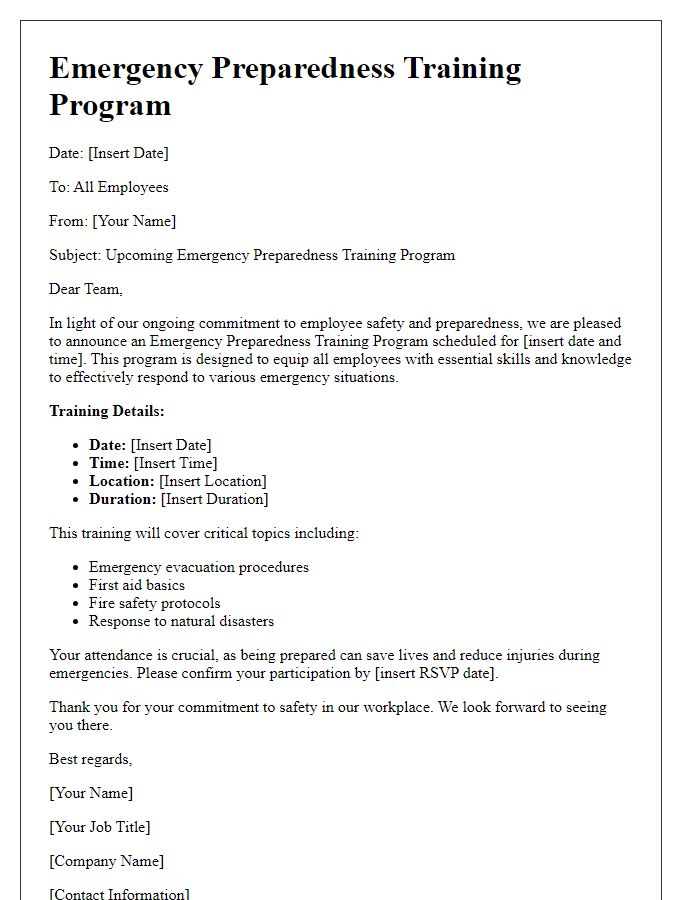In today's unpredictable world, having a solid emergency preparedness plan is more important than ever. Whether it's a natural disaster or unforeseen circumstances, being ready can make all the difference for you and your loved ones. This article will guide you through essential elements of an effective emergency plan, ensuring you're not only prepared but also confident in your approach. So, let's dive in and discover how you can safeguard your future!

Clear communication protocol
Effective communication during emergencies is crucial for ensuring safety and quick response. Emergency communication plans should establish clear roles and responsibilities for team members, ensuring everyone understands their tasks. Utilizing multiple channels such as text alerts, emails, and social media platforms allows for reaching a broader audience. Regular training sessions (held quarterly) ensure that all personnel are familiar with procedures. Designating a central command location (such as the main conference room) facilitates information dissemination. Keeping emergency contact lists updated is essential, with regular reviews to capture changes, including new team members and external partners (such as local law enforcement and medical services). Testing communication tools through drills verifies functionality and prepares teams for real-life scenarios.
Roles and responsibilities
Emergency preparedness plans outline critical roles and responsibilities for effective response during crises. Key stakeholders include local government agencies, such as the Department of Emergency Management, tasked with coordinating relief efforts and ensuring safety protocols. Community organizations like the American Red Cross provide essential support services and volunteer training. First responders, including police and fire departments, are responsible for immediate crisis intervention and public safety. Designated emergency coordinators within businesses oversee internal preparedness, ensuring staff are trained and aware of evacuation routes. Information technology teams maintain communication systems, facilitating timely alerts and updates. Collaboration among these entities leads to a more resilient community, capable of efficiently managing disasters, such as hurricanes or wildfires. Regular drills and training sessions enhance readiness and effectiveness in real emergencies.
Resource management
Effective resource management is crucial for emergency preparedness plans, ensuring that essential supplies and personnel are readily available during crises. For instance, stockpiling non-perishable food, water (minimum of one gallon per person per day recommended), and medical supplies in designated locations enhances community resilience. Training volunteer groups, such as CERT (Community Emergency Response Team), equips individuals with skills in first aid, search and rescue, and damage assessment to support local emergency response efforts. Utilizing software for tracking inventory (like the Emergency Operations Center Resource Management software) can prevent shortages and streamline resource allocation during disasters. Regular community drills and reviews of plans enhance knowledge and readiness among citizens, fostering a proactive approach to emergency situations.
Risk assessment and mitigation
Effective emergency preparedness plans require comprehensive risk assessment and mitigation strategies. A risk assessment identifies potential hazards, such as natural disasters (earthquakes, floods, hurricanes) and man-made events (terror attacks, industrial accidents). Evaluating risk involves analyzing the likelihood of these events occurring and their potential impact on communities or organizations. Mitigation strategies include implementing safety measures (evacuation routes, shelter systems) and developing response protocols (first aid training, communication systems). Continuous training and drills ensure that individuals remain aware of emergency procedures, fostering resilience in times of crisis. Collaboration with local authorities, such as the Federal Emergency Management Agency (FEMA) in the United States, enhances the effectiveness of these plans and builds community preparedness.
Progress monitoring and revision plans
Emergency preparedness plans require continuous progress monitoring and periodic revision to ensure effectiveness during crises. Implementation metrics, such as training attendance numbers and simulations conducted (averaging at least 2 drills per quarter), should be documented. Regular feedback from stakeholders, including local emergency services (e.g., fire and police departments in urban areas), needs comprehensive analysis for potential improvement. Revision timelines (typically every six months) ought to align with evolving regulations or community needs. Key personnel must maintain current certifications (e.g., CPR, first aid) to enhance response capabilities. Overall assessment meetings, scheduled biannually, will facilitate collaboration and proactive adjustments to the plans.
Letter Template For Emergency Preparedness Plans Samples
Letter template of emergency preparedness measures for community organizations

Letter template of emergency preparedness recommendations for local governments















Comments